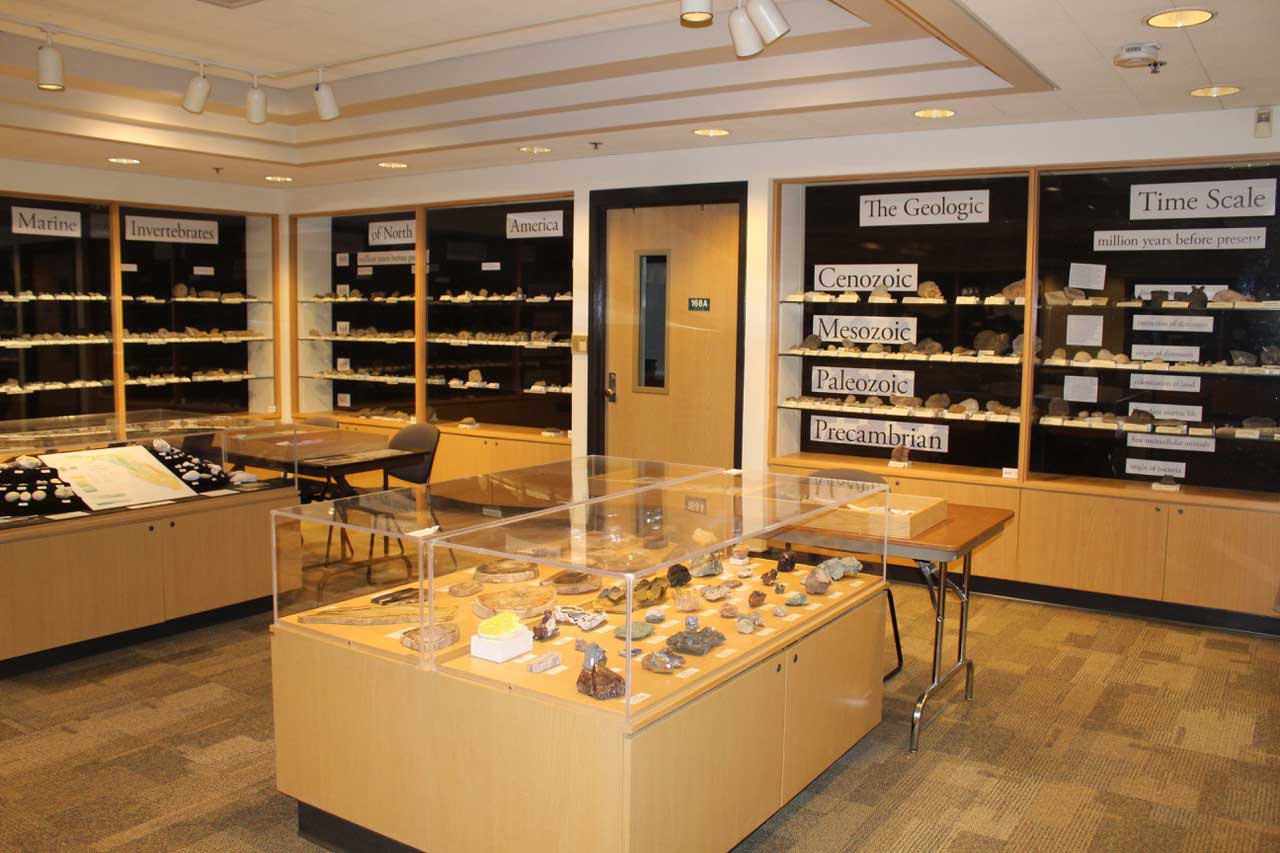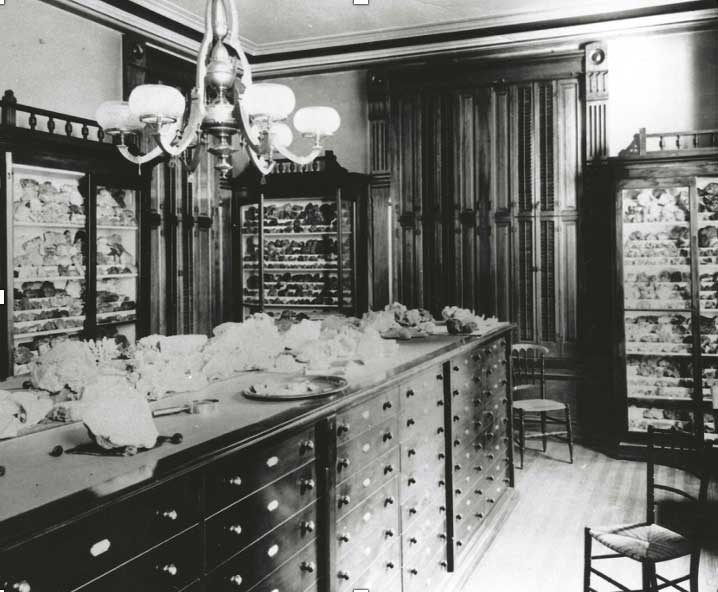
The Greene Museum (Greene Gallery) exhibits the Greene Geological Collection located in Lapham Hall on the Campus of the University of Wisconsin-Milwaukee, Milwaukee, Wisconsin, USA.
Housing institution
Thomas A. Greene Geological Museum (Greene Gallery)
Department of Geosciences
University of Wisconsin-Milwaukee
Location
3209 North Maryland Avenue, Milwaukee, Wisconsin 53211, United States of America
43° 4′ 33.816″ N – 87° 52′ 59.952″ W
Homepage
The Greene Museum (Greene Gallery) exhibits the Greene Geological Collection located in Lapham Hall on the Campus of the University of Wisconsin-Milwaukee, Milwaukee, Wisconsin, USA.
The 130-year-old Greene Collection represents the fundamental role of private collections in the 19th century development of geological science.
- Geo-collection description
The 19th-century Greene Geological Collection consists of over 56,000 fossils, mostly from the Silurian and Devonian rocks of Wisconsin and Illinois, along with 11,000 minerals from North America, Europe, and Japan. Assembled during the 1860s-1890s by Milwaukee businessman Thomas Arnold Greene, it is historically unique in its focus, documentation, and preservation. Many of its fossils were collected from now inaccessible localities previously related to the 1862 discovery of Paleozoic reefs (Mikulic, 1983), and it represents one of the largest collections of Silurian reef fossils in the world (Mikulic and Kluessendorf, 2024). James Hall (1889) described the exceptional importance of Greene’s collection compared to other contemporary private collections. Most fossils are accompanied by Greene’s original labels, some with notes by prominent paleontologists, while various minerals retain commercial dealer labels. The university archives house Greene’s extensive correspondence with prominent scientists, collectors, quarrymen, commercial dealers, and scientific organizations, along with other documents related to the development, character, and use of the collection. In combination, these specimens, labels, and correspondence demonstrate how 19th-century collectors assembled their collections, and the important role they had in contemporary research. Housed in Lapham Hall at the University of Wisconsin-Milwaukee, the collection is used in educational and research programs.
- Geo-collection value
The Greene Geological Collection is of global importance as a rare and unusually well-documented historical example of the once numerous private collections crucial in 19th-century geological research. Although specimens from contemporary collections still exist, most have been integrated into larger institutional holdings, losing the collective association needed for special studies, including intact. While many contemporary collectors were interested in obtaining select specimens of specific taxa, Greene’s intent was to acquire a wide range of specimens of all taxa found in local Silurian and Devonian rocks (Kluessendorf and Mikulic, 1997). Because of its comprehensive nature and the inclusion of type and figured specimens, his irreplaceable collection will remain an important research tool, specifically related to the systematics of Silurian reef fossils worldwide. As Milwaukee-Chicago Silurian reefs were the first discovered, their fossils were also the first described, and serve as a basis for comparison with Silurian reef fossils found elsewhere. This collection also had a historical role in women’s science education. From 1913 until 1964, it was housed on the campus of Milwaukee-Downer College, one of the few American women’s colleges with a long tradition of teaching geology.
- Reference
Greacen, K. F., and Ball, J.R., 1946. Silurian Invertebrate Fossils from Illinois in the Thomas A. Greene Museum at Milwaukee-Downer College. Milwaukee-Downer College Bulletin 61p.
Hall, J., 1889. Report of the State Geologist, For the year 1888. Forty-Second Annual Report of the Trustees of the State Museum of Natural History For the year 1888. Albany. (p 378-379)
Kluessendorf, J., and Mikulic, D. G., 1997. Mr. Greene and his Brachiopods. Rocks & Minerals, 72, January-February, p 50-55.
Mikulic, D. G., 1983. Milwaukee’s Gentlemen Paleontologists. Wisconsin Academy of Sciences, Arts, and Letters Transactions, 71, 5-20
Mikulic, D. G., and Kluessendorf, J., 2024. Geoheritage and geoconservation in the American Midwest: Silurian reefs of the Milwaukee-Chicago region. In Clary, R. M., Pyle, E. J. and Andrews, W. M. (eds) Geology’s Significant Sites and their Contributions to Geoheritage. Geological Society of London, Special Publications, 543.
https://doi.org/10.1144/SP543-2023-2
